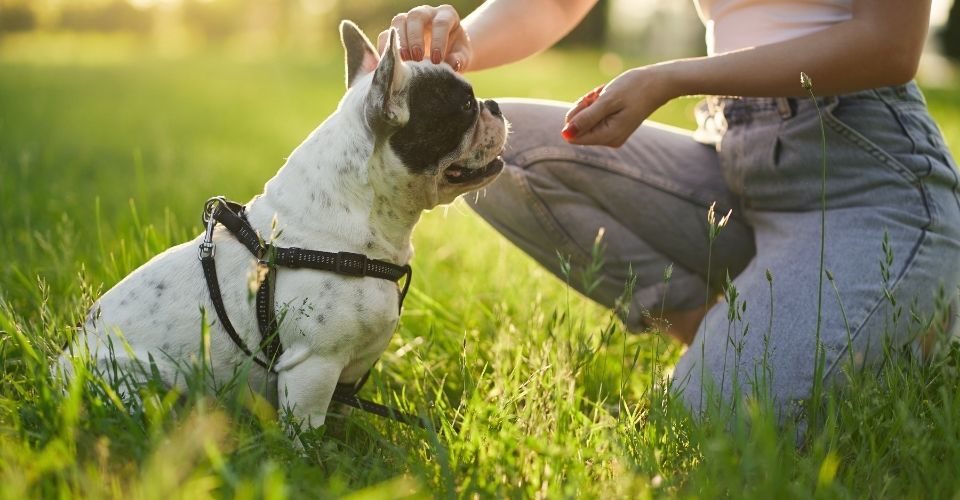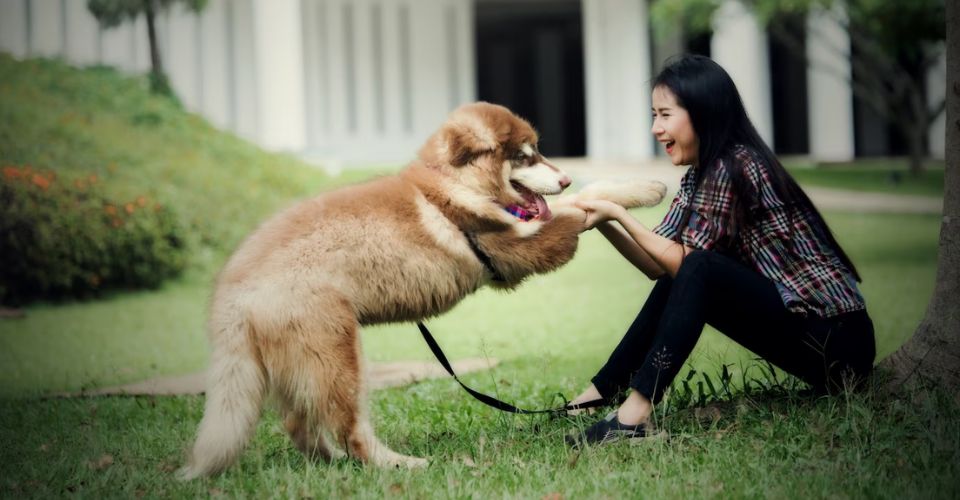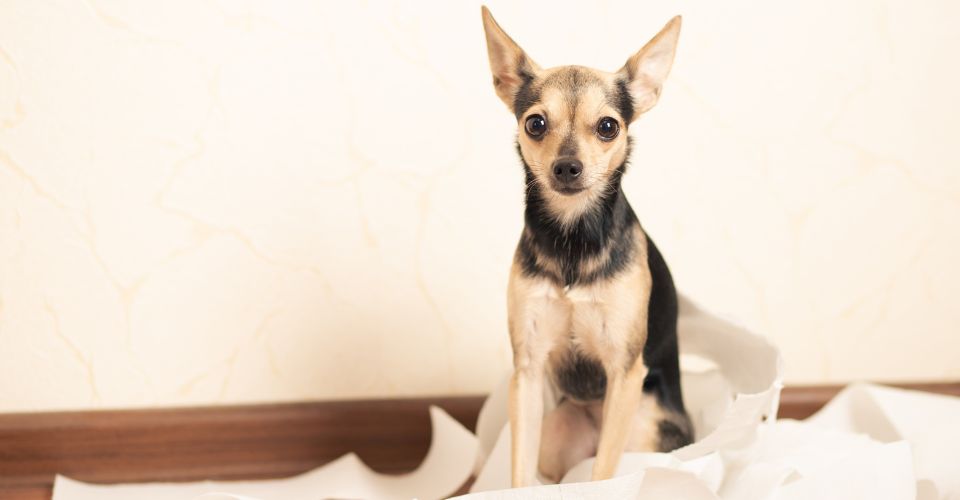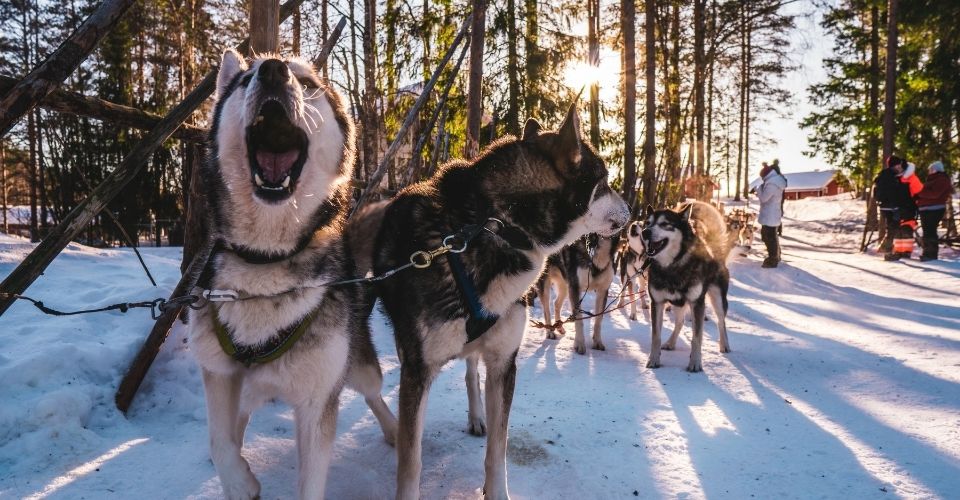We love dogs—their picture-perfect faces, wet kisses, snuggles, and adorable mischiefs. What’s not to love?
Nothing if the dog is well-trained and well-behaved. But if the dog is not well-trained, there could be plenty of things that dog parents—even the most loving and caring ones—might find aversive such as nipping and biting, frequent barking, urinating, and defecating on carpets and sofas, knocking over stuff and whatnot. That’s why dog training is crucial.
In the natural canine world, mama dogs are responsible for training their pups for the outside world. How to behave, where to pee and poop, and how to live happily together with the littermates and in peace with the world at large—they would learn it all in the mother’s lap. But now, as the mother dog is not around, this falls on your shoulders. You have to play the role of the mama dog, teach them everything, and raise them to be well-behaved adults.
Things to Consider Before Getting a Dog
Whether to have a dog or not is as hard as “whether to have a kid or not.” It’s a lot of pressure—you have to provide the new family member enough time, space and sponsor its care and feeding. So you should never decide on getting a dog on just a whim. Instead, you should sleep over it.
If it’s difficult for you to make the final decision, then you can try fostering a dog and see how it goes. If you can easily manage to foster the dog, you can readily adopt him. Otherwise, you can enjoy his company until someone ready to adopt a dog knocks at your door.
If you are getting a new dog, make sure that it is not sourced from a puppy mill. Instead, adopt a dog from a reputable breeder or a shelter.
New Puppy Checklist
Before you bring home the pup, ensure that you are fully prepared for it, the way you would prepare if you were expecting a baby. Just like you make changes to your home to make it child-friendly, you should arrange the physical environment of your home for the safety of your pup—look for things he could swallow, knock over, jump off, and step on, etc.
After taking measures for the safety of your new family member, make arrangements for his comfort by getting a dog bed. Research and stay informed about the best dog food to ensure that all your pups’ nutritional needs are met. Similarly, arrange for all the tools and accessories you or your puppy might need, such as a litter box, some toys, edible bones for dogs, dog collars—spiked one or a martingale dog collar, and of course, a dog boarding kennel, in which you would bring him home.
After making arrangements at home, consult a trusted veterinarian—we advise you to take your dog to the vet before bringing him home. Next, get the contacts of the nearby emergency animal hospital, a dog groomer near you, and a dog sitter if you are working all day and there is no one to look after your dog during that time.
If you want to do the grooming yourself, you would need:
- A dog shampoo, and know how to bathe a puppy
- A dog nail grinder if you do not want your dog to scratch your furniture
- And never forget about the dental health of your dog—get a vet-recommended dog toothpaste
Get your hands on the above-discussed items, and later when your dog is home, he will let you know what else he might need you to get for him.
When to Begin Puppy Training?
The dog training should begin as soon as you bring the pup into your home, which is around 7 weeks of age. At this young age, puppies have a very little attention span, but they can easily learn the basic obedience commands like “sit” “stay,” and “down.”
Traditionally, the formal dog training is delayed until the pup is over six months old. But this may not be the right approach. We recommend starting dog training right away, without wasting any time. In fact, during 8 to 16 weeks of age, our dogs are the most receptive to learning, according to the Pet Medical Center of Edmond. The socialization training must be done during this period; otherwise, dogs may develop fears and phobias.
Dogs start learning as soon as they open their eyes and start walking—they learn from every experience. So, delaying training would mean not only missed opportunities but also the development and solidifying of a few to many unwanted behaviors and phobias. Training at a later stage, your dog will have to first unlearn the incorrectly learned behaviors and re-learn.
Can You Train an Older Dog?
Training is mostly associated with young puppies, but the reality is, our dogs can learn at all stages of their lives. While there are some commands and behavior that puppies learn faster, others are learned faster and better by older dogs. For instance, potty-training an older dog is easier as they have the ability to “hold it” for several hours. Conversely, crate training an older dog is more challenging than crate training a puppy.
Bonding With Your Dog: How To Bond With Your Dog?
You must be wondering what does boding with your dog has to do with dog training. Well, dog training cannot be effective if there is not sufficient trust between the dog and his owner. “Effective training requires you to have mutually earned trust between the two of you,” says Zak George, the writer of the Zak George’s Guide to a Well-Behaved Dog and Dog Training Revolution. Earning your dog’s trust and bonding with him will take time. Be patient, says George, for if you are not, you cannot expect meaningful results from the dog training.
Dogs love nothing more than spending quality time with their dog parents, so no matter how busy you are, you should slide in a quality one-on-one time with your dog in your schedule. You can take them out for a stroll around the block or on morning runs, or maybe just have an interactive play session in the lawn or in your bedroom.
If you have a high-energy dog, he might need more activities—games, runs, exercise—to experience a “runner’s high.” Or, if what you have is a lazy dog breed, you can just snuggle with them on a couch and watch your favorite movie.
Dog Training Methods
Dogs are like kids—some are obedient, and others are unruly. Some learn to behave appropriately when rewarded with treats or affection, and others learn only when they are scolded or spanked. So, depending on the nature of dogs, different dog training methods have been tried and tested over time.
- Positive reinforcement: It’s the most effective and popular training method among dog trainers. It is simple: Dogs will repeat behavior that earns them a reward and correct behavior when a reward is removed. Using this method, you will have to be very patient and consistent.
- Clicker training: This is more like a sub-category of positive reinforcement. The only difference is that in clicker training, a device is used that produces a click sound to let your dog knows that a wanted behavior is completed. Following the ticking sound, the dog is rewarded.
- Alpha dog or dominance: This approach has been traditionally used by dog trainers but now has been debunked—and discouraged by many. This dog training method relies on the wolf pack mentality—hierarchy and dominance. The bottom line is that you have to be the dominant figure, and the dog has to be submissive to you—you neither let your dog sit with you on the sofa nor do you get down to your dog’s eye level because that would mean you two are equal.
- Relationship-based training: This is the most-talked-about dog training method. George and many other dog trainers have been stressing the importance of your relationship with your dog. For effective training, a certain level of trust and bond must be established between you and your dog.
- E-collar dog training: It is a kind of positive punishment training for dogs, in which mild pain or discomfort is inflicted upon dogs when they are acting out of line. Shock collars for dogs and e-collars are used to inflict pain and discomfort—an electric shock, vibration, or a spray of citronella—when a dog is performing an unwanted task.
How to Crate Train a Dog?
Before you begin dog crate training, you should get this clear that crating a dog is not imprisoning a dog. Rather it is to provide a safe space to the dog, where he can come hang at any time, especially if there are strangers—guests—in the house or something else is making the dog anxious. Puppy crating is for their own good.
You cannot just bring a crate and cage your dog into it. That’s not how it works, you have to first earn the trust of your dog, make him familiar with the cage, associate it with positive things like toys and treats and then gradually move to enclose the dog in the cage. You will have to be quite patient here, so no scolding or spanking your dog.
If you have brought home an old dog, you are in for a challenge because crate training an older dog is a bit difficult. Don’t worry, just be patient.
How to Leash Train a Dog?
You cannot take your dog out for a walk without a leash. Therefore, leash training for a dog is a must—every dog and puppy should know how to walk on a leash. Leash training is quite simple, but you still have to be patient here. While walking your dog on a leash, you may face several issues like a dog pulling on a leash and leash aggression.
If you love running and want a canine running buddy, you should get yourself a tall skinny dog who loves to run. You should also learn how often you should walk your dog. If you don’t walk or engage a high-en`ergy dog in exercise daily, he might develop some behavioral issues, besides getting obese.
How to House Train a Dog?
After your dog has become a bit comfortable with the crate, you can begin the potty training between 12 weeks of age to 16 weeks. At this age, puppies have control over their bladders and are ready to learn to hold them. While housetraining a dog, you have to be consistent and patient. Puppy potty training typically takes 4 to 6 months, but sometimes, it could go year long, according to Pets WebMD.
If you can be patient and consistent and have a large dog breed, your pup can be potty trained fully quite earlier. You should keep in mind that establishing a routine is the key.
If you have rescued an older dog or you have adopted one from the shelter, you are in luck because potty-training an older dog is quite easier, as they have greater control over their bladders.
To housetrain your dog, make sure that their crate is of perfect size—it is big enough to allow them to stand and freely circle around in it but not big enough to give them space to pee or poop in the corners. Make the crate comfortable and when you think it’s time, get your dog outside on the leash and say the command such as “do your business.” If they defecate or urinate, give them a treat.
Now take your dog indoors, and before putting him back in the crate, give him some playtime. After the dog has spent around 3 hours in the crate, take him outside and repeat the process. As the dog learns, cut the crate time and add it to their playtime.
In addition to this schedule, always take your canine friend out after every meal.
Dog Socializing: How to Socialize a Dog?
Dog socialization means teaching your dog how to be around people and other pets. Some dog owners think that socializing a puppy is not necessary as they are not planning on taking him for walks or on picnics. That is not a good approach—every puppy and dog should be socialized. You never know when you have to take your dog to a vet, and when you do, you don’t want them to be the worst-behaved dog at the vet clinic.
Introducing New Dog to Family
You should never let your new puppy or dog come in direct contact with your other family members, both two-legged and four-legged, until the dog is socialized. Cats and dogs living and playing together are adorable, but do not jump the gun and introduce them as soon as you get the pupper home. You have to be very cautious while introducing your new dog to a cat or dog already living under your roof.
Dog Obedience Training
For your dog to be obedient, he must understand what you are asking of him. For this, they have to learn commands and know how to respond when you say a certain command. When teaching commands to your dog, start with basic commands in the beginning. Then with time, you can combine two commands.
- Sit: Sit is one of the basic dog training commands, and every dog should know it. Fortunately, it is pretty simple to teach our dogs the sit command as dogs tend to sit naturally. But the catch here is to teach your dog to associate the sit action with the command. This can be easily done with positive reinforcement.
- Down: After teaching your dog the sit command, your next focus should be on teaching him to lie down on your command. If your dog has aced the sit command, this will be pretty easy as it is sort of a continuation of the “sit.”
- Stay: Dogs love to tail us around the house and wherever we go. This is cute, but sometimes this gets them in trouble. Therefore, teaching dogs the “stay” command is crucial.
- Come: This is another great skill that every dog should have under his belt. Because dogs are easily distracted, and their curiosity often leads them into harm’s way. When your dog is running into trouble—like traffic, towards an aggressive dog in the park, or chase a bike—that’s when “come” comes in handy.
- Leave it: This is another lifesaving command that every dog should learn. Our dogs love to put everything in their mouth—for them, everything is either a plaything or something to eat. So when your puppy is going through litter or nibbling on something else that is toxic to dogs, “leave it” would literally be the lifesaver.
- Watch me/Look at me: We appreciate when our dogs randomly look at us whenever they want. But we also want them to focus on us, regardless of the distractions, when we say the command “watch me.” The command could be anything like “watch,” “look,” or “look at me.” The key is to teach your dog to associate certain word(s) with the action of focusing on you—looking up and making eye contact with you.
Teaching Dog New Tricks
If your dog has mastered all the basic skills, you can move on to teaching him some new tricks and more advanced commands. Two fun tricks to teach your dog could be how to roll over or play dead. Some easy tricks to teach your dog include how to spin, kiss, fetch, paw, and shake hands.
Common Dog Behavioral Issues
All dogs—even those that are always on their best behavior—have the tendency to exhibit bad behaviors. These common behavioral issues can easily give you a headache and take your dog into harm’s way. Therefore, you must know how to make your dog behave like a gentle pupper if he acts out of line.
- Barking: Barking is a way our dogs communicate with us—and their own folk. It is adorable when they bark to greet us or alert us. But dog barking all the time or dog barking at the door is annoying for you and unhealthy for your dog. It is crucial that you immediately learn why your dog is barking—it could be the pent-up energy.
Dog barking could be your puppy’s way of letting out that pent-up energy. As a responsible dog parent, you must take them out for walks and give them exercise. For this, you need to know how often to walk a dog and how much exercise does a dog need.
- Chewing: Chewing is something that is wired in our dog’s nature. It is an important activity for most dogs. But it becomes a problem when the dog is chewing on everything he can get his mouth on—chewing on shoes, pillows, and whatnot. In such cases, you have to stop your dog from chewing.
Don’t get mad at your puppy for destructive chewing, it might be the puppy teething. You can instead get them a chewable dog bone or some other chewable toys for puppies.
- Jumping up: Jumping up is one of the most common dog behavioral issues that most trainers deal with. It is normal dog behavior, and many dog owners love their dogs jumping up, but sometimes, it becomes a nuisance and even unsafe. Therefore, you should train your dog not to jump up at you or strangers.
- Play biting: Dog play biting might look super adorable, but the one getting bit knows that it hurts—a lot. No doubts puppies have small teeth but those are razor-sharp teeth, and even a play bite can do some serious damage. Therefore, it is imperative that you stop it as soon as possible, otherwise, it may continue into your dog’s adulthood.
- Leash pulling: Taking your dog out for a walk sounds like an easy task, but when your dog starts lunging, pulling on the leash, leash biting, and leash aggression, you realize that it is a lot easier said than done. To stop your dog from behaving inappropriately on the leash, you need to identify the underlying issue and address it.
- Begging: Dog begging for food at the table is not an uncommon scene. Most dogs are beggars—some for food, others for attention, and a few for both. We want to give all the happiness in the world—food and attention—to our canine friends, but sometimes we need them to give us a break. We cannot share our food with them as many human foods are toxic to dogs.
In these cases, you can command your dog to sit and lie down in a place away from the table and stay there.
- Digging: Like chewing, digging is a natural behavior for dogs—they love to dig and bury bones and toys. Certain dog breeds like Terriers are more prone to digging. While dogs do enjoy digging, we cannot have them digging through our lawn every time. Therefore, we should either stop them from digging at all or give them a specific spot where they can dig as much as they want.
- Eating poop: Dog eating poop, also known as coprophagia, is a common canine habit. When it comes to a dog eating poop, you should carefully notice if your dog is consuming his poop or that of other dogs or other animals, i.e., cats or hamsters. While it may appear disgusting, a dog eating his own poop is generally harmless.
- Humping: While generally there is nothing dangerous about dog humping, it only means that dog is aroused or just excited, but it is embarrassing. As per the American Kennel Club, it is humping that embarrasses dog owners the most. All dogs—male or female, spayed or intact—find humping pleasurable. If you want to save yourself from the embarrassment of your dog humping some other dog or a log in the park, you can train them to stop humping at a younger age.
Most dog owners make the mistake of letting their puppies hump and reward them with their attention and laugh as they find it cute and amusing. But at later stages, it gets a bit difficult to stop dogs from this behavior.
- Fears and phobias: Just like we have fears and phobias, our dogs have their shares of fears and phobias, too. If dogs are not properly socialized, they can develop several fears and phobias. To resolve your dog’s fears and phobias, you have to identify whatever is making them fearful and anxious and change their response to it. You may also want to take some medications to calm your anxious dog.
- Separation anxiety: Dogs love the company of their owners; they tail them around the house all day long. So, when you leave your dog for an 8-hour long shift or vacation, they feel stressed out. This separation anxiety leads to the symptoms like barking, pacing, drooling, chewing, etc. To help your dog get over this separation anxiety, you have to make your dog comfortable with being away from you.
- Dog aggression: Dogs show aggression by teeth-baring, growling, snapping, lunging, and biting. All dogs, irrespective of their gender, breed, or size, can exhibit aggression. Dog aggression is a serious problem; therefore, it is crucial that if your dog is showing aggressive behavior, you do not overlook it. Rather, talk to your veterinarian to rule out the possibility of an underlying health issue.
There are many different types of dog aggression, including territorial, protective, possessive, predatory, defensive, fear, and social aggression. Before moving on to stopping the dog aggression, you have to first identify what is making your dog aggressive.





